Duration: 1:02
Video by George Atanassov
GIANTS OF THE ICE AGE
Immersing visitors in an Ice Age experience with a life-size cave and digital painting
SEP 2023 - MAY 2024 // TEAM PROJECT (UNIVERSITY + INDUSTRY COLLABORATION)
In February 2025, Heureka, the Finnish Science Centre, will be opening an exhibition titled Giants of the Ice Age. The exhibition will introduce 20 life-size animatronics of Ice Age creatures to a staged environment, immersing visitors in the frozen world of 10,000+ years ago.
Our directive within this exhibition was to create a hands-on cave painting activity to bring visitors into the human experience of the Ice Age. We decided to build a life-size cave with a digital cave painting activity wall.
Our technical requirements included:
— Low maintenance: no actual painting due to the mess
— Stays within budget of €10,000
— Fits within 25 m² (269 ft²)
— Will survive 18 months and an estimated 400,000 visitors
— Caters to all ages and accessibilities
— Kid-proof: non-toxic, highly durable
This project was a collaboration between Heureka (FI), Aalto University's Product Development Project (FI), and Universidad del Desarrollo (CL). I was the project manager of a team of 10 students, 3 from UDD in Chile, and 7 from Aalto in Finland.
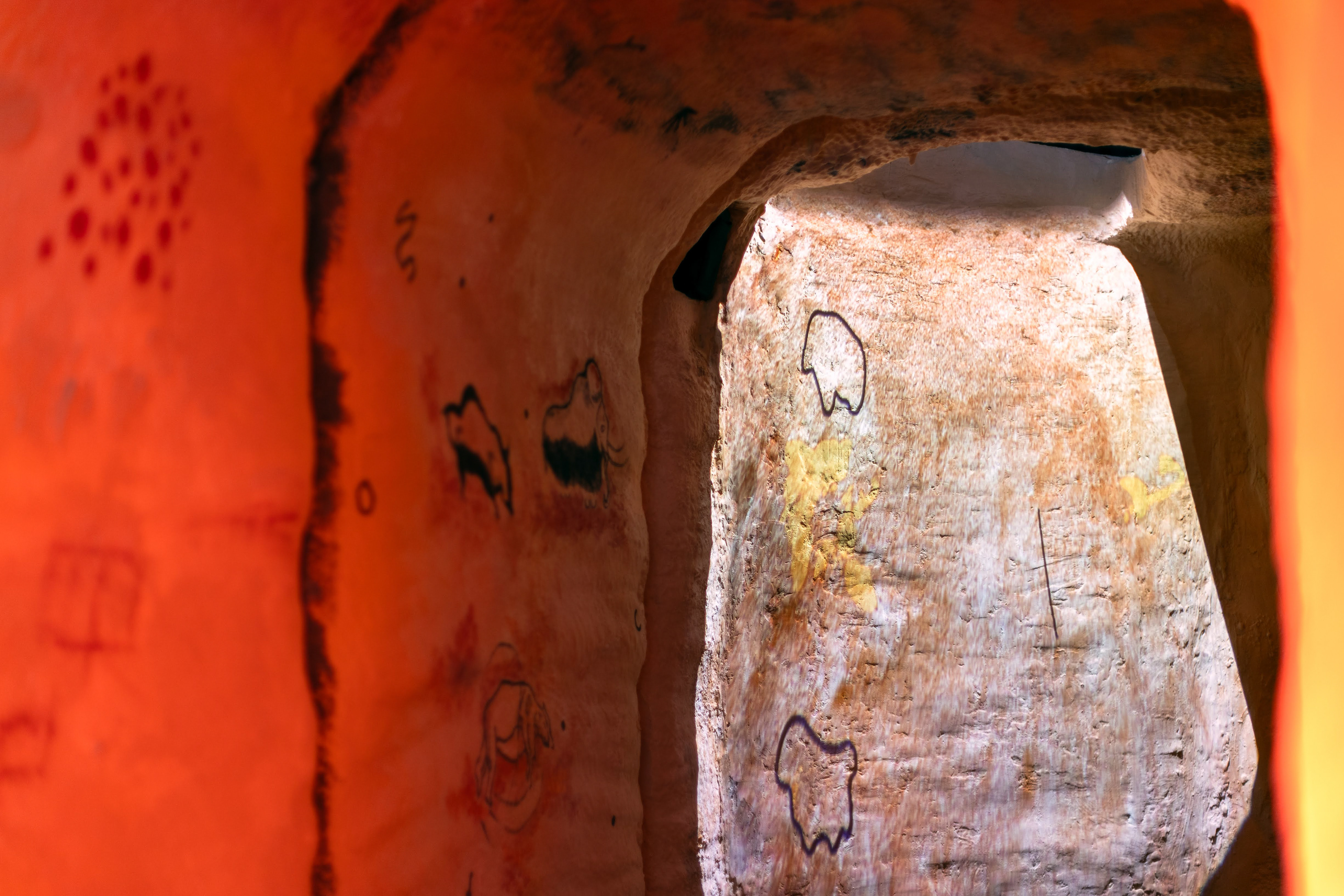
Photo by Aaro Packalén

Photo by Aaro Packalén

Photo by Aaro Packalén

Photo by Aaro Packalén
RESEARCH
HEUREKA
Heureka is one of the most-visited leisure destinations in all of Finland, with an average of about 300,000 visitors per year. Heureka’s core mission is to introduce the public to science and technology through interactive exhibitions, planetarium films, and science programs, all connected to their motto, “Joy of Discovery!”
Heureka’s average visitor is 10 to 12 years old, though ages range from toddlers to the elderly. The average group size is 2-4 visitors, and it is common to see school groups and families with young children visiting. The visit duration per exhibition station is around 1.5 minutes, so maintaining traffic flow throughout the exhibitions is important. Heureka often has 2-3 rotating exhibitions at once, plus a Classics section that remains the same year-round.
We visited Heureka in October 2023 to get a feeling for the Science Centre in-person and to understand how our project would be placed among the exhibitions.
Heureka Visit (3:13)
ICE AGE caves
In order to get a picture of Ice Age life and the environment inside of a cave, we decided to visit a former mine shaft near Helsinki, Finland, as well as five Ice Age caves—originals and reproductions—across northern France and Spain.
The Finnish mine shaft, Kipparvuori, provided a local insight into the temperatures, humidities, and sounds inside caves.
I visited the five caves in France and Spain on my own during winter break in 2023, using a scholarship I had earned earlier. Out of the five caves, two were reproductions (Lascaux IV, Altamira) and three were the originals (Font de Gaume, Las Monedas, and El Castillo). I chose to visit a mix of real and fake caves because I wanted to get examples of how other museums replicated caves—the materials they used, the accuracy of the paintings, and more.
On the way back, I also picked up a book about Ice Age history and some Ice Age painting kits, so that my teammates could also try cave painting.
References:
Clifford, Elle, and Paul Bahn. Everyday Life in the Ice Age: A New Study of Our Ancestors. Archaeopress Publishing, 2022.
Lascaux IV Visit (6:33)

Kipparvuori, Finland

Lascaux IV, France

Font de Gaume, France
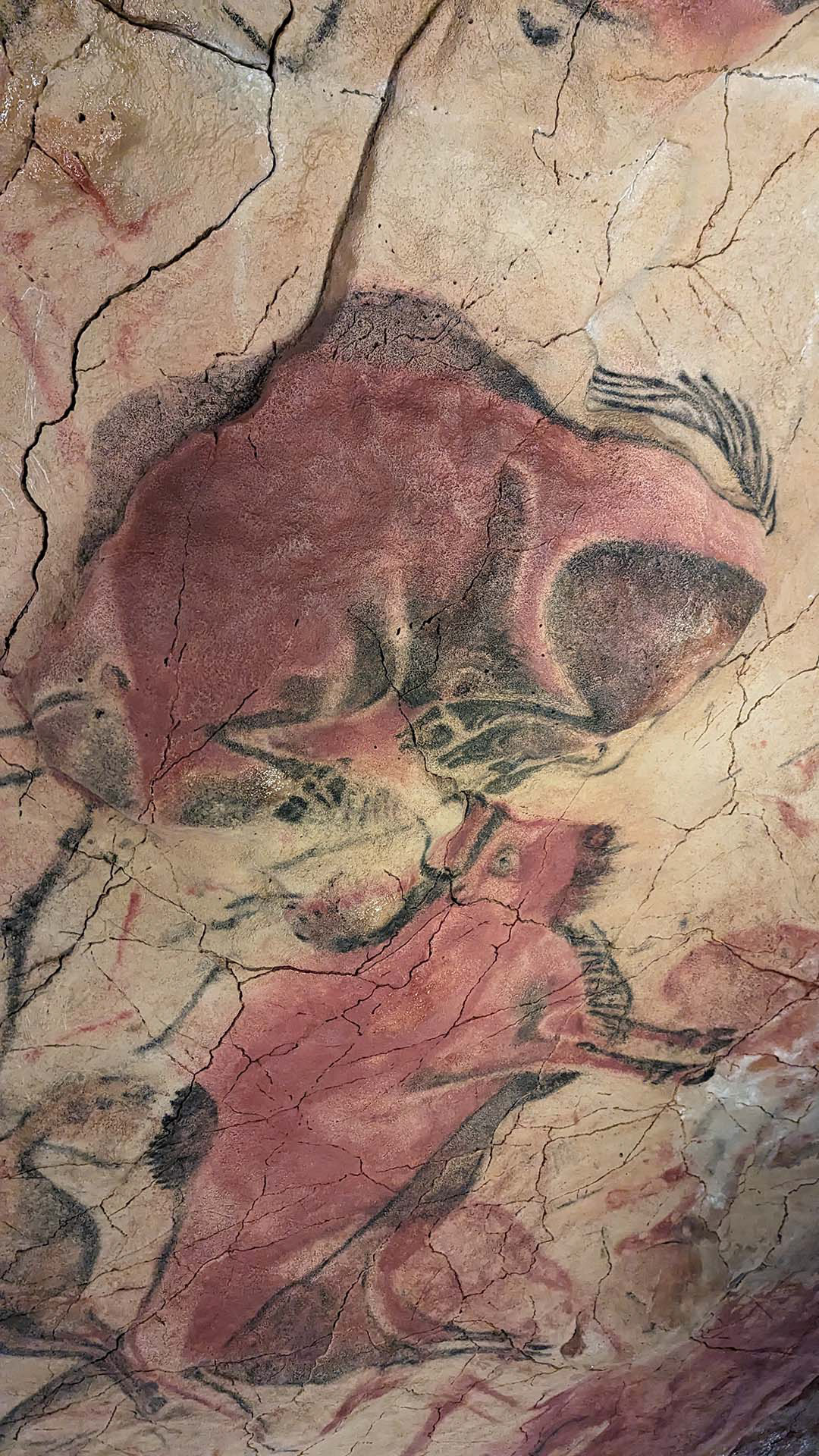
Altamira, Spain

Las Monedas, Spain

El Castillo, Spain

Ice Age painting tools (Lascaux IV, France)

Ice Age painting tools (Lascaux IV, France)

Ice Age painting tools (Lascaux IV, France)

Trying to paint with mineral powders
PROTOTYPING
Cave Layout
The layout went through many iterations of sketches, CADs, renders, and life-size rough prototypes until we arrived at the final shape.
In the beginning, we wanted to make organic floorplans with lots of room to play: we added twists and turns, hidden pockets and passages, and elements like boulders or columns in the middle of the room. We quickly got feedback that these designs were too complicated for the average visit time of 1.5 minutes, and they posed risks with fire safety and accessibility.
We reigned in our crazier ideas and settled on a simple, single-room shape that would fit nicely into the corner of the Heureka exhibition hall. The width of the cave would fit a wheelchair and its turning radius, plus we added a built-in bench for parents and grandparents to rest while their children played.

Storyboard of the user experience
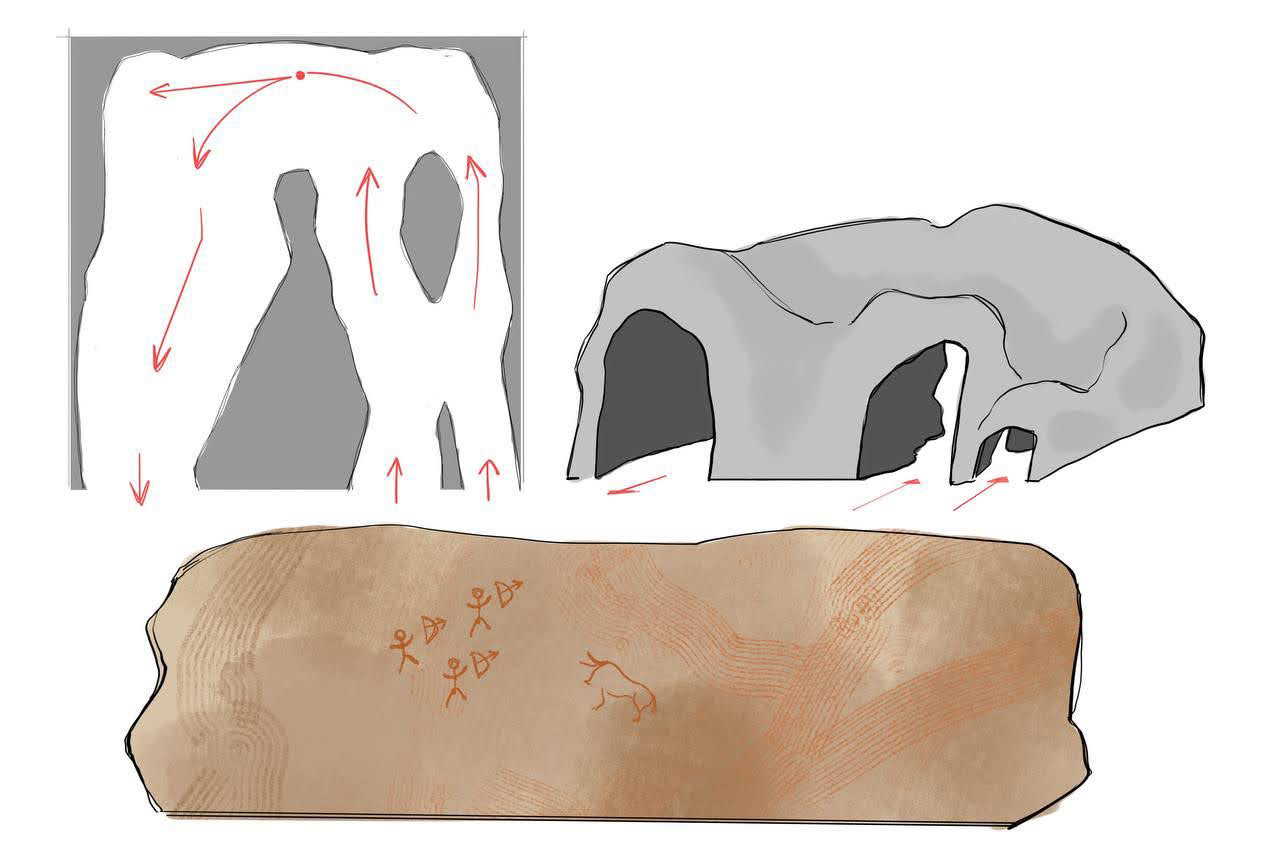
Detailed floorplans

First CAD model

Rough prototyping 1:1 floorplans
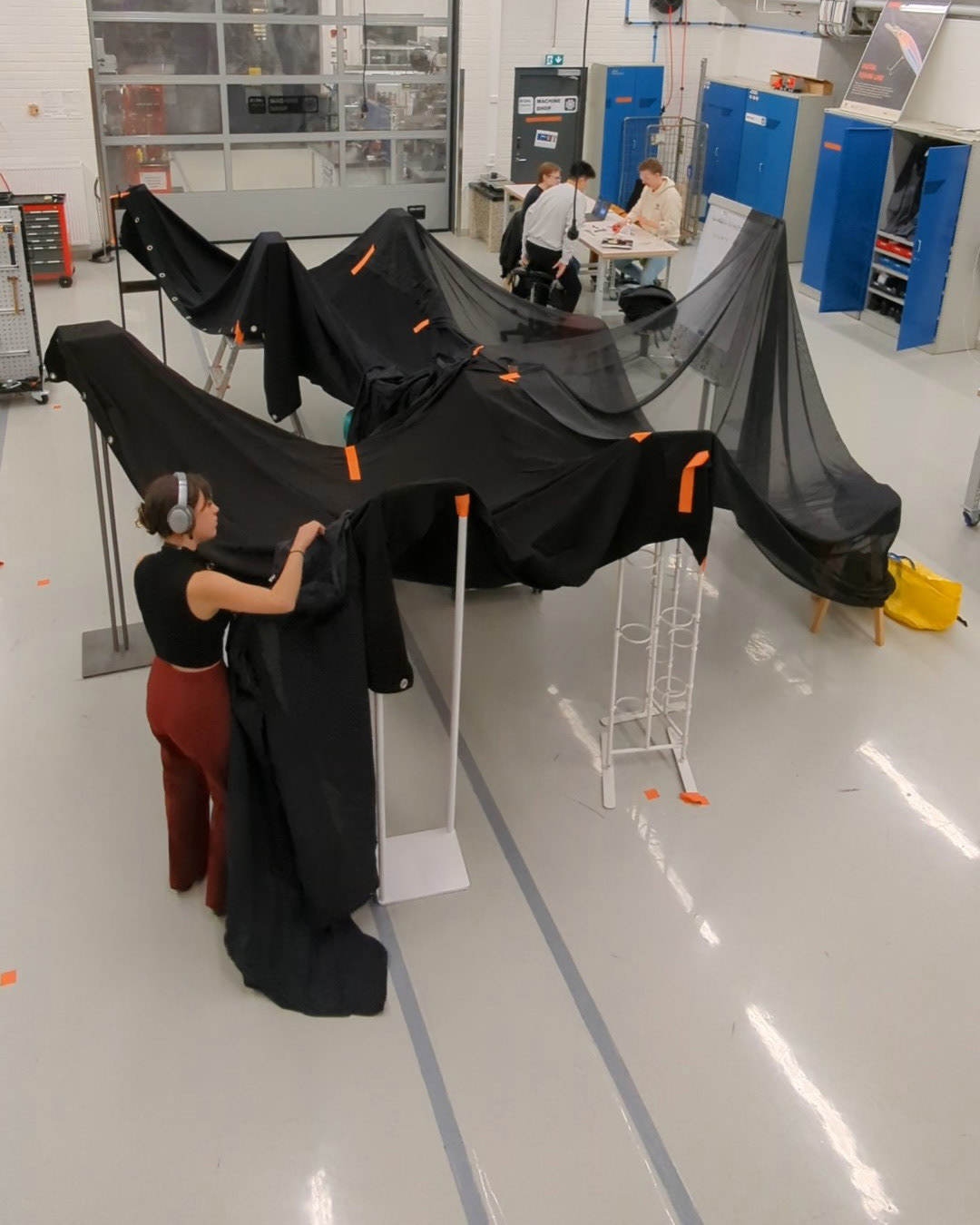
Rough prototyping 1:1 floorplans
CAVE MATERIALS
We systematically tested a diverse range of materials, searching for an optimal balance between affordability, moldability, strength, rigidity, lightweight construction, and realistic appearance. We took inspiration from the set design world. Most of the materials we experimented with were too flimsy (heat-forming felt, aluminum fabric, polypropylene) or too heavy and difficult to work with (clay).
Ultimately we landed on polyurethane foam: it was cheap enough to purchase in large quantities, rigid enough to be be carved and painted easily, and lightweight enough to eventually be transported to the museum.

Heat-formed felt

Moldable aluminum fabric

Vacuum-formed polypropylene

Clay

Polyurethane foam
DIGITAL PAINTING
Initially, we were fixated on "hiding the magic" of the painting technology from the visitors. But each approach had its own problems.
Back projection would require a see-through material for the cave wall, which generally meant increased challenges with the longevity and durability of the wall. Thermochromic paint, although promising, was expensive, had a limited shelf life, and limited color choices. A capacitive touch grid seemed to be the best approach, but eventually we understood that the grid was becoming fragile and expensive at the scale that we needed it to work: if one line in the grid broke after we coated the wall with its finishing materials, we would have a "dead pixel" in the canvas.
Finally, we landed on a combination of LIDAR tracking and an overhead projector. You could see the electronics through a hole in the ceiling, but we later learned in user testing that the joy of interacting with the wall overrode any breaking of the illusion from seeing the technology.

Back projection

Depth mapping with a LIDAR
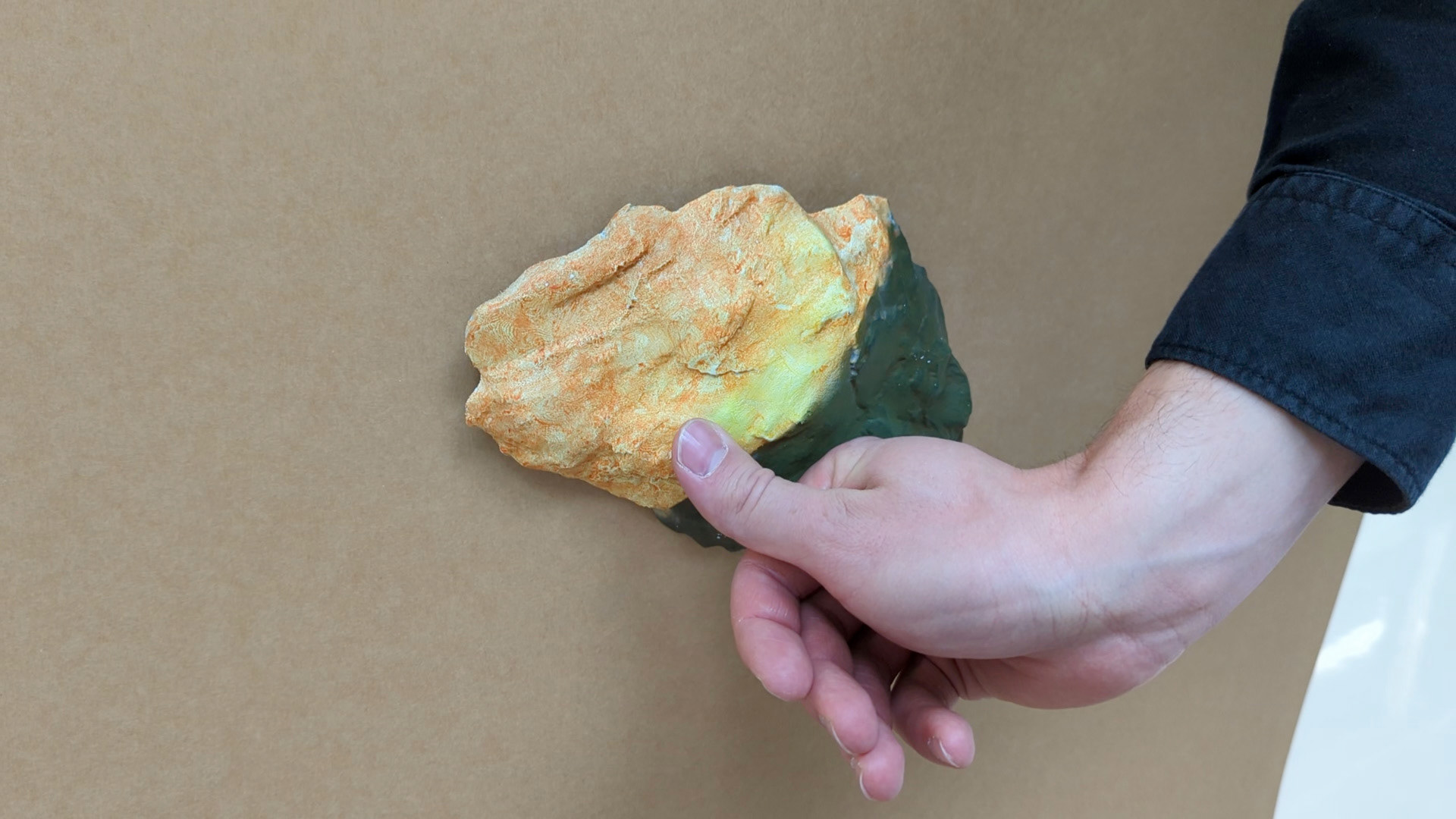
Thermochromic paint

Capacitive touch grid

Early version of LIDAR & projector painting
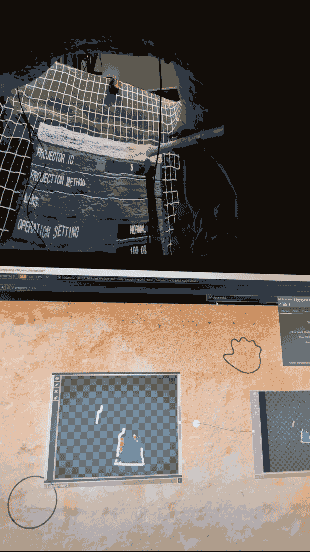
Calibrating the LIDAR & projector
BUILDING + TESTING
CAVE CONSTRUCTION
Over approximately four months, we constructed the cave. It started with building a structure out of 132 meters of aluminum profile, which was then covered in chicken wire and jute fabric, and finally sprayed with 210 liters of polyurethane spray. To finish it off, we carved, sanded, and then painted the polyurethane with a high grit primer, before adding color and texture with limestone paint and plaster. Limestone was chosen as it is one of the most common materials found in Ice Age caves in southwestern Europe. We additionally leveled off the drawing wall with 75 kilograms of plaster to make it smoother and more suitable to the LIDAR and projector.
Cave construction process (2:57)
User Testing
We completed two rounds of user testing: the first was an open-call to visitors of all ages, and the second was specifically with children. I can't display much of the footage due to privacy, but we made several observations from the testing:
— Improvising tools & techniques: Children and adults alike started to use their entire bodies to paint. Kids got especially creative, using their eyeglasses, hats, and shoes as tools to paint.
— Floating hand effect: We'd been worried that the accuracy and precision of the LIDAR wasn't enough to keep people in the illusion of painting, as occasionally the tracking would skip or detect too early, resulting in a "floating hand" effect. Surprisingly, both children and adults had fun playing with the floating effect, pretending to be a wizard or a Jedi waving at the wall from a slight distance.
— Rewarding more easily: After receiving feedback on difficulties that interrupted the experience, we made numerous tweaks with the size of the digital brush, the percentage fill of the outline required to trigger the animation, and the texture of the wall itself.



FINAL PRESENTATION & LIVE DEMO
Duration: 11:57
Video by George Atanassov
Team Heureka + Heureka staff
CREDITS
Team Heureka
Tiina Otala — Project Manager, Design, Construction
Samuel Forsman — Mechanical Engineering, Construction
Yara Saliba — CAD, Design
Javiera “Javi” Ponce — Animations, Graphics
Ariana Marta — Electronics, Interaction
Maikki Hartikainen — Construction
Linnea Risku — Construction
Juho Nordquist — Construction
Jufei “Flo” Chen — Finances
Maximiliano “Max” Barraza — Finances
HEUREKA STAFF
Päivi Garner
Roger Sandell
Sampsa Piira
Pekka Toiminen
PDP STAFF
Kalevi “Eetu” Ekman
Albin Weckström
Aaro Packalén
SPECIAL THANKS
Camila Comas, Paul O’Toole, Simon Andsten, Matti Niinimäki, Michael Vivian Ekka, Gert Kauniste, George Atanassov, Kari Kääriäinen, Erwin Laiho, Sushant Passi, Jasmine Xie, Tatu Haakana, Anna Kuukka, Vesa “Vesku” Saarijärvi, Jami Laakso, Pasi Pakula, Marcelo Torres Espinoza, Johanna Ilmarinen, Krisjanis Rijnieks, Masi Järvinen, Farishtay Zaidi, Miguel Nazar, Nicklas Sundström, Semkan Uragan, Jouni Pekkarinen, Riikka Mäkelä
